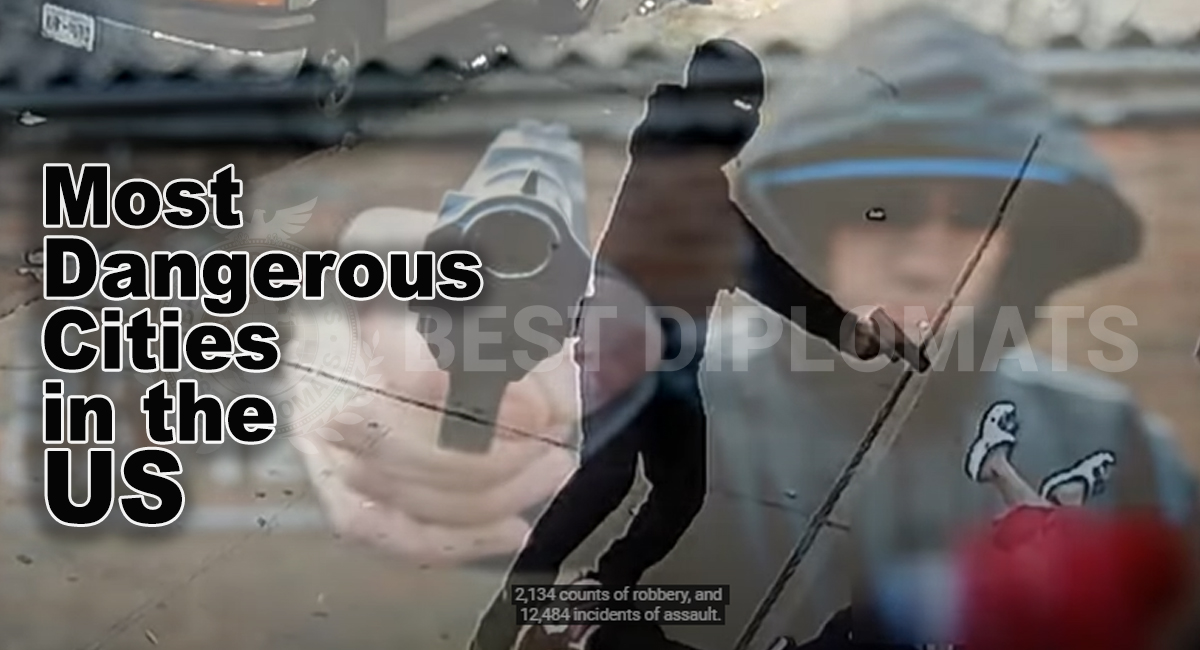Crime and safety are paramount concerns for residents and policymakers alike. Determining the “most dangerous” city in the United States involves examining various crime statistics and understanding the underlying factors contributing to high crime rates. Based on recent data, St. Louis, Missouri, frequently tops the list of the most dangerous cities in the U.S., largely due to its high rates of violent crime.
Crime Statistics in St. Louis
St. Louis has garnered attention for its alarming crime statistics, particularly in terms of violent crime. According to FBI data, the city consistently records high numbers of homicides, aggravated assaults, and robberies. In 2023, St. Louis had a violent crime rate of approximately 2,082 incidents per 100,000 residents, significantly higher than the national average of 398 per 100,000 residents.
Homicide rates in St. Louis are particularly concerning. The city often records over 200 homicides annually, translating to a homicide rate of around 60 per 100,000 residents. This is starkly higher than the national average of 5 per 100,000. Additionally, the rates of aggravated assault and robbery in St. Louis are also troubling, contributing to the city’s reputation as a dangerous place.
Factors Contributing to High Crime Rates
Understanding why St. Louis has such high crime rates involves examining several socioeconomic factors:
1. Economic Disparities: St. Louis has significant economic disparities, with pockets of severe poverty. High unemployment rates and limited economic opportunities contribute to crime as individuals in impoverished neighborhoods may turn to illegal activities for survival.
2. Educational Inequities: The city struggles with educational disparities, with underfunded schools and low graduation rates in certain areas. A lack of education and job training programs can lead to higher crime rates, as individuals lack the skills necessary for gainful employment.
3. Drug and Gang Activity: St. Louis faces significant issues with drug trafficking and gang violence. These activities often lead to violent confrontations, including homicides and assaults. The city’s central location makes it a hub for drug distribution, exacerbating the problem.
4. Historical Segregation and Housing Policies: Historical segregation and discriminatory housing policies have created areas of concentrated poverty and limited access to resources. These segregated neighborhoods often experience higher crime rates due to a lack of investment and opportunities.
5. Police and Community Relations: Tense relations between law enforcement and communities in St. Louis can hinder effective policing. Distrust in the police force can lead to underreporting of crimes and reduced cooperation with investigations, making it difficult to address crime effectively.
Efforts to Address Crime
Despite these challenges, various initiatives aim to reduce crime in St. Louis. Community organizations, local government, and law enforcement are working together to implement strategies that address the root causes of crime. Some of these efforts include:
1. Community Policing: Building trust between police officers and the community through community policing initiatives can help improve safety. Programs that encourage positive interactions between law enforcement and residents aim to foster cooperation and reduce crime.
2. Economic Development Programs: Investing in economic development, job training, and education can provide residents with alternatives to criminal activity. Programs focused on youth employment and entrepreneurship are particularly impactful.
3. Violence Interruption Programs: Programs that intervene in ongoing conflicts and provide mediation can help prevent violent crimes. Organizations working on the ground to disrupt cycles of retaliation and provide support to at-risk individuals are crucial.
4. Drug Rehabilitation and Mental Health Services: Addressing substance abuse and providing mental health services can reduce crime related to drug activity and untreated mental health issues. Expanding access to these services is essential for long-term crime reduction.
Conclusion
St. Louis’s designation as the most dangerous city in the U.S. underscores the complex interplay of socioeconomic factors, historical context, and community dynamics contributing to high crime rates. While the statistics are concerning, ongoing efforts to address the root causes of crime offer hope for a safer future. By focusing on economic development, education, community engagement, and comprehensive support services, St. Louis can work towards reducing crime and improving the quality of life for its residents.
